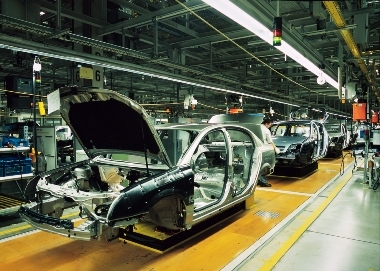THE DIT (International Division of Labor) it is the distribution of international economic-industrial production. Considering that it is impossible for a single country to be the potential producer of all commodities, the fields of productive specialization are divided into different parts of the Earth.
The DIT went through some phases, which followed the economic and political dynamics of the historical period in which they existed. See the table below:

Simplified illustrative diagram of the DIT phases
First DIT
During the end of the 15th century and throughout the 16th century, the beginning of the great navigations and expansion of European civilization around the world, capitalism was in its initial phase, called in commercial capitalism. This period was characterized by manufacturing (manual production) from the extraction of raw materials and by the accumulation of ores and precious metals by the nations (metallism).
With that, those places colonized by European countries exercised the function of producing, from the exploration of its natural resources, precious metals and raw materials used by metropolises. An example is that of Brazil, where Portugal extracted Pau-Brasil for the production of various types of products.
Second DIT
During the 16th century – but mainly from the 17th century onwards – this division of labor underwent a few sensitive changes. With the First and Second Industrial Revolutions, colonies and underdeveloped countries also began to supply agricultural products, as well as various types of minerals and spices. During this period, for example, Brazil was marked by the monoculture of sugar cane (16th century) and gold exploration (17th century).
Third DIT or "New DIT"
From the 20th century, with the Technical-Scientific-Informational Revolution and the consolidation of the Financial Capitalism, we have the expansion of large multinationals around the world. This led to the change of the International Division of Labor, which became known also as New DIT.
During this period, the underdeveloped countries also carried out their late industrialization processes. But, unlike the industrialization of developed countries, this happened after the opening of the market of these countries and by the installation of Multinational or Global companies, coming, almost always, from countries developed.
In addition, there was also a segmentation of the productive market. In order to seek tax exemptions and quick access to raw materials in underdeveloped countries, multinationals distributed their production process across the globe. A car, for example, has its engine produced in Mexico, the bumpers in Argentina, the chassis in South Korea and the assembly carried out in Brazil.
With that, came the name of “maquiladora industries”, as there was no production of any material in them, but only the assembly coming from the production of parts from different sectors of the world.

Most auto industries are actually only responsible for assembling cars
It is worth noting that industrial production continues to be carried out mostly by developed countries, or with capital from those countries. Only the production location has changed, but all the capital of these companies returns to their countries of origin. This migration of multinationals is due to the search for abundant labor in poor countries and greater opportunities to exploit natural resources.
By Rodolfo Alves Pena
Graduated in Geography
Source: Brazil School - https://brasilescola.uol.com.br/geografia/divisao-internacional-trabalho-dit.htm
